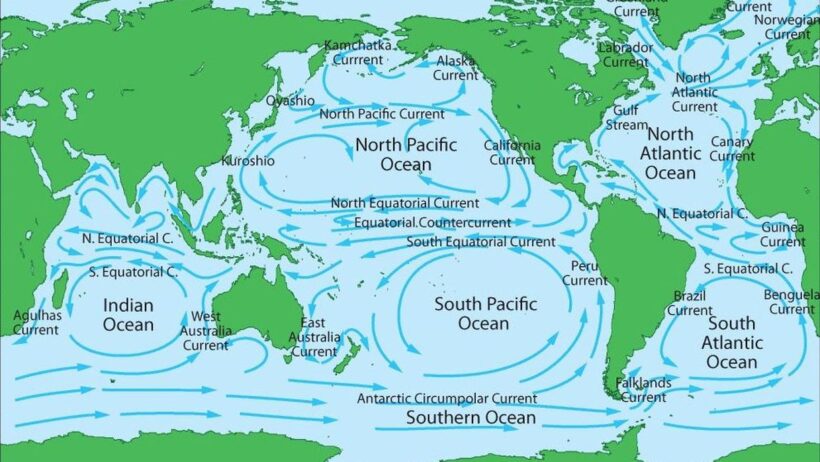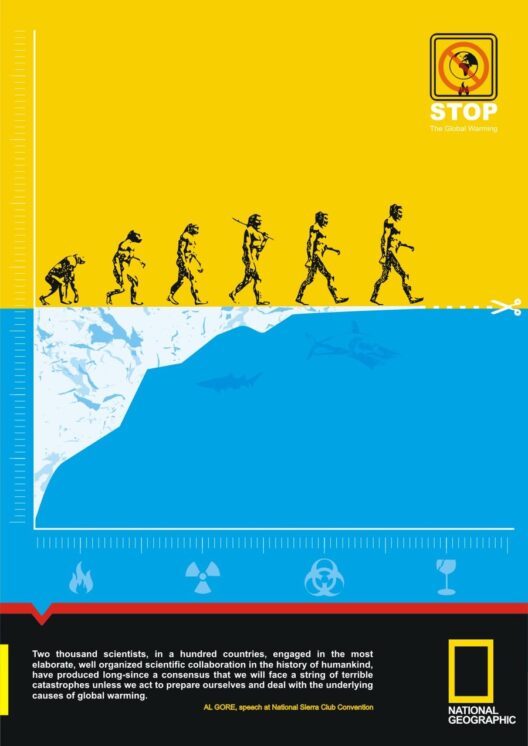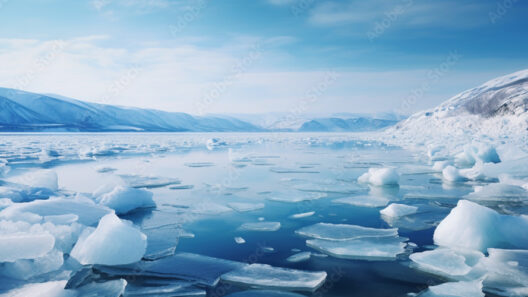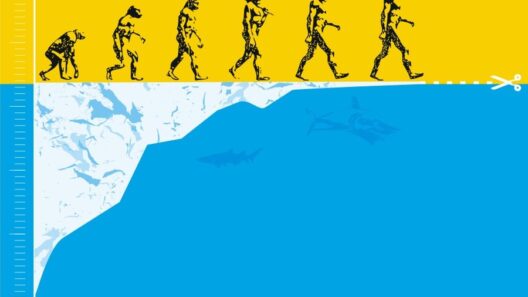As we delve into the enigmatic depths of our oceans, it becomes increasingly evident that beneath the vibrant blue surface lies a world profoundly altered by climate change. The narrative of global warming is often portrayed through the familiar tropes of rising temperatures and melting glaciers. However, the intricate tapestry of life beneath the waves reveals a far more nuanced consequence: the transformation of ocean currents and salinity gradients. These hidden effects may seem subtle, yet they wield significant influence over our planet’s climate system, ecology, and ultimately, our human existence.
At the heart of this discourse is the concept of ocean currents, often likened to the circulatory system of the Earth. Just as blood flows through veins, ocean currents transport heat, nutrients, and even pollutants across vast distances. The global oceanic conveyor belt, primarily driven by temperature and salinity variations, operates in an exquisite balance. This balance, however, is becoming increasingly precarious as climate change alters the foundational elements of this system.
First, let us examine the impact of rising temperatures. As the atmosphere warms, so too do the oceans, which absorb approximately 90% of the excess heat generated by greenhouse gas emissions. This thermal expansion of seawater contributes to rising sea levels and precipitates changes in the density and buoyancy of water masses. Warmer water is less dense than colder water, which disrupts the stratification that governs the movement of currents. This distortion can lead to alterations in the Gulf Stream, a critical current influencing weather patterns in Europe and North America. A weakened Gulf Stream could unleash a cascade of climatic consequences, from increased storm intensity to unpredictable weather phenomena.
Moreover, the ever-looming specter of freshwater influx from melting polar ice caps and glaciers adds another layer of complexity to this issue. Freshwater, being less dense than seawater, dilutes the salinity of ocean waters, particularly in regions such as the North Atlantic. This alteration in salinity has profound implications for deep-water formation — a key driver of global thermohaline circulation. When salinity decreases, the ability of water to sink diminishes, leading to a slowdown of this vital conveyor belt. The origin of this dramatic shift can be traced to anthropogenic influences, a stark reminder of humanity’s long-standing imprint on natural systems.
Yet, the effects of changing salinity extend beyond mere temperature and density modifications. Alterations to salinity levels can perturb marine ecosystems, impacting species distribution and biodiversity. As species adapt (or fail to adapt) to these changes, the intricate relationships within food webs become destabilized. Coral reefs, often heralded as the hotspots of marine biodiversity, are particularly vulnerable. Elevated temperatures not only lead to coral bleaching but also exacerbate the stress on these organisms due to shifting salinity levels. A decline in coral health ripples throughout the ecosystem, affecting the myriad species that depend on these structures for survival.
Consider the metaphor of a finely tuned instrument, where each string must be perfectly calibrated for harmonious sound. The orchestra of marine life is similarly dependent on the precise interplay between temperature, salinity, and nutrient availability. As we neglect to heed the signals of distress presented by our oceans, we risk disassembling this concert of life that has thrived for millennia. Furthermore, the loss of biodiversity as species struggle against changing conditions can lead to a diminishment of ecosystem services — the benefits that nature provides to humanity, such as fisheries, carbon sequestration, and water purification.
These shifts in currents and salinity have not only ecological implications but also socio-economic repercussions. Coastal communities, heavily reliant on fishing and tourism, face increasing uncertainty as marine populations decline and habitats are altered. As fisheries collapse, livelihoods are jeopardized. Nations that depend on stable weather patterns for agriculture grapple with the manifestation of climate extremes, rendering traditional practices obsolete. The culinary landscape of coastal regions, intricately woven into the fabric of cultural identity, faces dilution as species migrate or dwindle in number.
Intriguingly, the changes wrought by climate change have the potential to ignite geopolitical tensions. Competition for dwindling marine resources can lead to conflicts among nations. As fish stocks diminish and migratory species seek refuge in more favorable environments, the waters that were once shared may increasingly become points of contention. The notion that our oceans, once a symbol of tranquility and cooperation, could become battlegrounds underscores the deep-seated implications of destabilized currents and altered salinity.
In conclusion, the consequences of global warming extend far beyond the immediate visual indicators of climate change. The hidden effects lurking beneath the ocean’s surface — the transformations of currents and salinity — weave a complex narrative that intertwines with every facet of our existence. They challenge us to reconsider our relationship with the natural world and to act with foresight and responsibility. As stewards of the planet, the onus lies upon us to advocate for sustainable practices and policies that mitigate these changes and protect the intricate, life-sustaining systems of our oceans.
As we navigate the uncharted waters of this climate crisis, it is imperative to embrace a holistic approach that acknowledges the interconnectedness of our blue planet. Only then can we hope to preserve the delicate balance of oceanic currents and salinity, ensuring the survival of not just our marine ecosystems, but our very own species. The time to act is now; the tides of change await no one.








